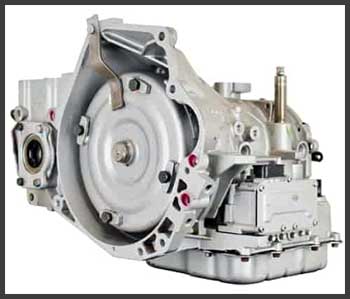Automobile technology has come a long way since the days of the horse-drawn carriage. This journey of evolution has brought to life many sophisticated machineries, one of them being the 41TE transmission, also known as the A604 transmission.
However, no technology is flawless, and the 41TE transmission is not an exception. This article will dissect the problems with 41TE transmission, explain their possible solutions, and offer a helping hand to those dealing with these issues.
Exploring The World of 41TE Transmission

The 41TE is an automatic transmission that first saw daylight in 1989 when Chrysler introduced it in their minivans.
Its robust build and cost-effectiveness saw it adopted in various models, such as the Dodge Caravan, Chrysler PT Cruiser, and Plymouth Voyager.
However, despite its wide application and durability, the 41TE transmission has had its fair share of problems.
Delving Into the Common Failures of 41TE Transmission
Owners and technicians have pointed out several common failures of the 41TE transmission. One of the top issues revolves around shifting.
Erratic shifting, delays in shifting, or the transmission refusing to shift at all are common problems associated with this transmission.
Another problem is the failure of the transmission to engage. In such instances, you might experience a delay in drive engagement or a lack of response when trying to switch from parking to driving mode.
Transmission fluid leak is another problem often reported. Leaks can lead to an inadequate fluid level, which can cause severe damage to your transmission over time.
Grappling with the Resistance of the 41TE Solenoid
The resistance of a 41TE solenoid, an integral part of the transmission, is typically about 10-15 ohms when measured at 20 degrees Celsius. However, this can vary with temperature.
Low resistance can lead to problems like harsh shifting, slipping, or the transmission going into limp mode. If you notice any of these symptoms, it’s advised to have your solenoid pack checked.
Distinguishing the 41TE from the 40TE: Understanding the Differences
Although they might appear similar, there’s a stark difference between the 40TE and 41TE transmission. Primarily, the difference lies in their application.
While the 41TE is meant for vehicles with larger engines and higher torque output, the 40TE is designed for lighter, less powerful vehicles. Therefore, when dealing with transmission issues, it’s essential to understand the specific transmission type in your vehicle.
Is 41TE Transmission Worth It?

The 41TE transmission, while it may have some issues, also offers numerous advantages that make it a worthy choice.
It provides four forward speeds with an electronically controlled overdrive.
This allows the driver to have better control over the vehicle’s performance and fuel efficiency.
Its wide range of application in various car models is a testament to its durability and cost-effectiveness.
It’s worth mentioning that the 41TE is an automatic transmission, which adds convenience to its list of benefits, as it frees the driver from the need to manually change gears.
However, there’s a flip side to this coin. As discussed previously, the 41TE transmission is susceptible to certain problems, such as erratic shifting and transmission fluid leaks. These issues can lead to costly repairs and maintenance if not addressed promptly.
That said, it’s worth noting that these problems are not unique to the 41TE transmission. Most automatic transmissions experience similar issues, particularly when they aren’t properly maintained.
So, the answer to the question of whether the 41TE transmission is worth it largely depends on individual circumstances. If you are someone who values convenience and can keep up with the required maintenance, then the 41TE transmission can be a worthy choice.
However, if you’d prefer a less maintenance-intensive option, you might want to consider other types of transmissions.
Also Read: What Are The Common Toyota 4Runner Transmission Solenoid?
Frequently Asked Questions (FAQ)
The common failures of 41TE include problems with shifting, failure to engage, and transmission fluid leaks.
The main difference lies in their application. The 41TE is designed for heavier vehicles with larger engines, while the 40TE is meant for lighter vehicles with less powerful engines.
The resistance of a 41TE solenoid is typically about 10-15 ohms at 20 degrees Celsius.
Opinions on PT Cruiser transmissions vary. While some users find them reliable, others report issues. Regular maintenance and early problem detection can help improve their performance and longevity.
Wrapping Up
The 41TE transmission might have its problems, but with the right knowledge, regular maintenance, and early intervention, it can serve you well for years.
After all, every cloud has a silver lining, and in this case, the silver lining is your ability to understand and tackle the problems with your 41TE transmission.
So, buckle up, and let’s continue our journey through the world of automobile technology together.



